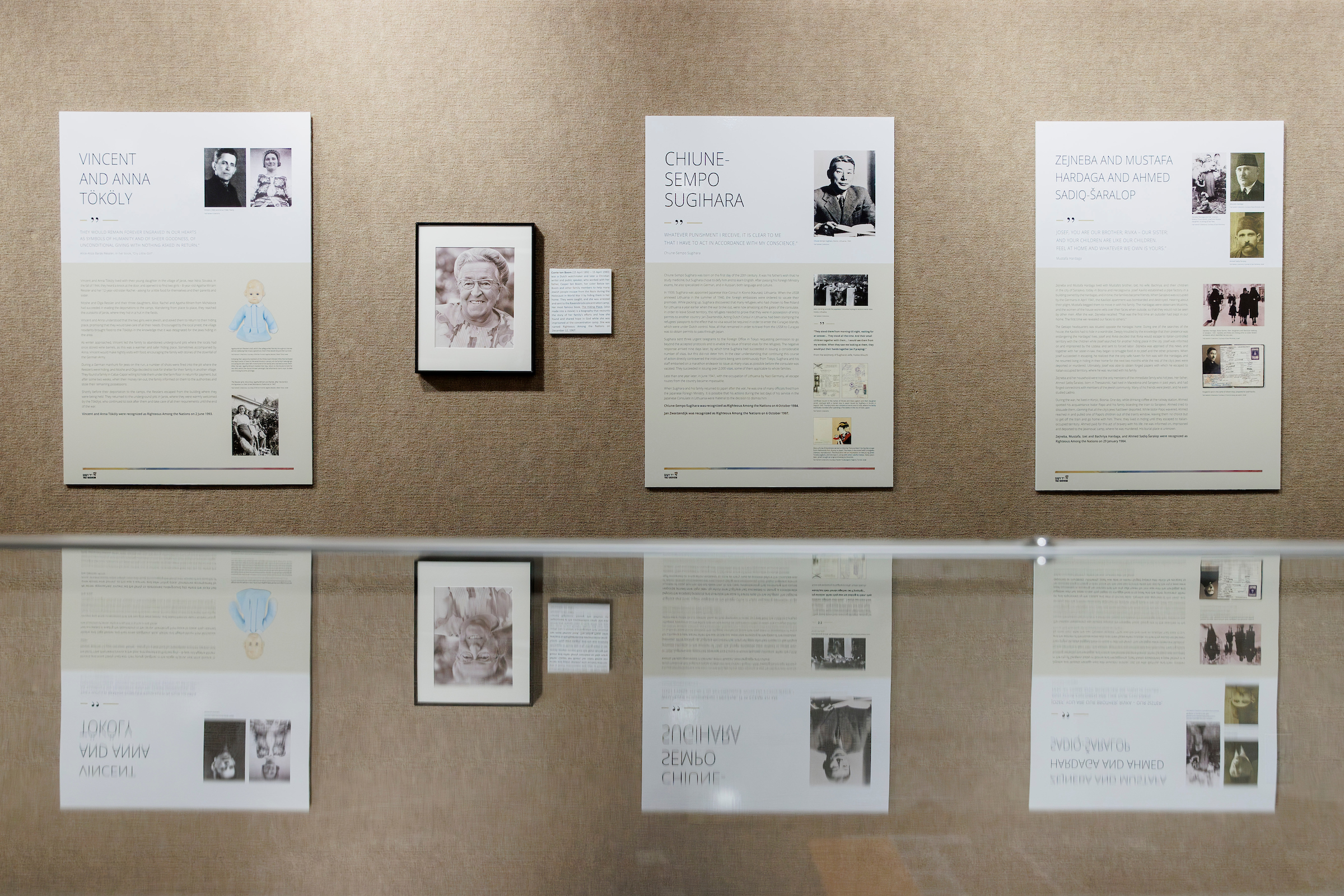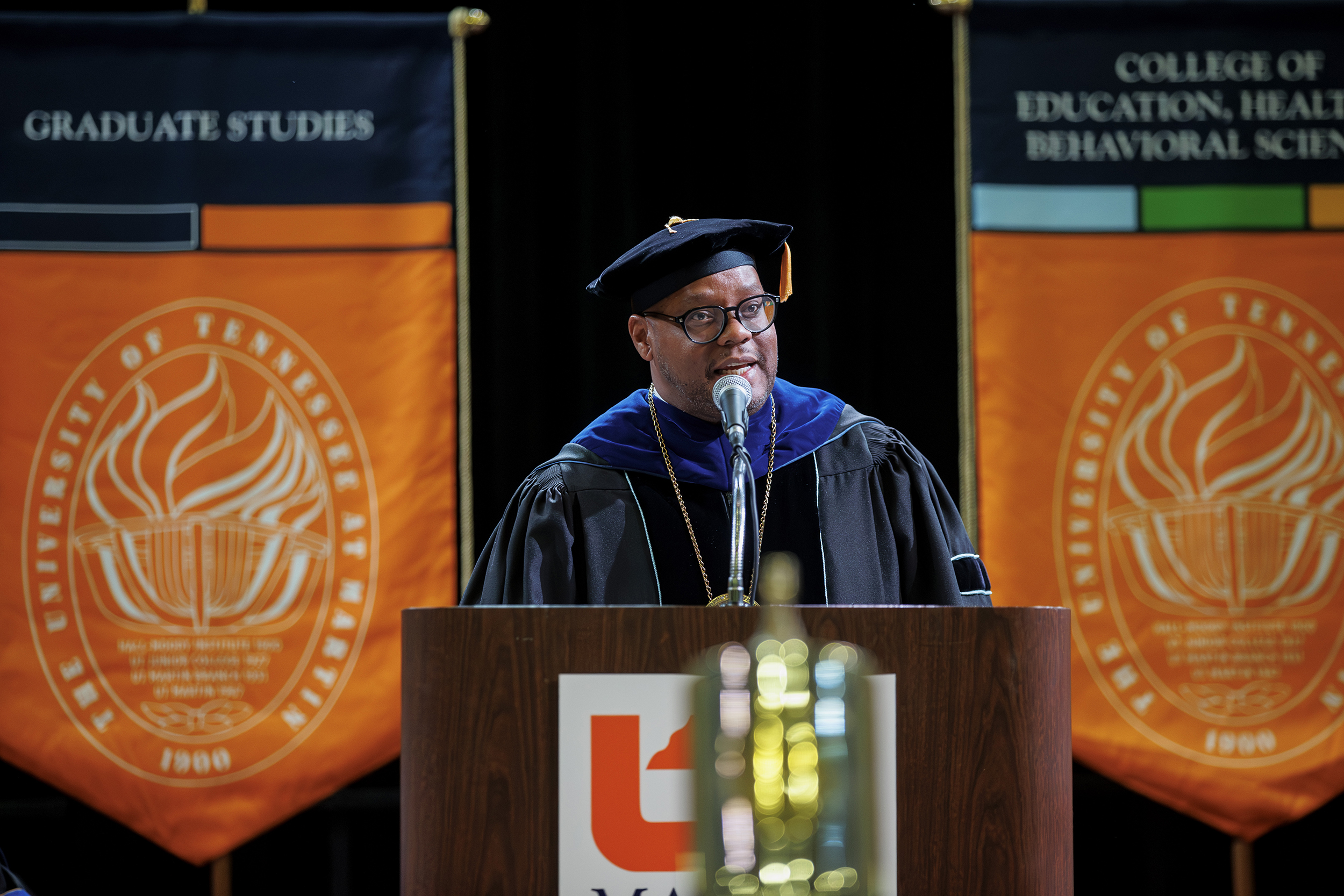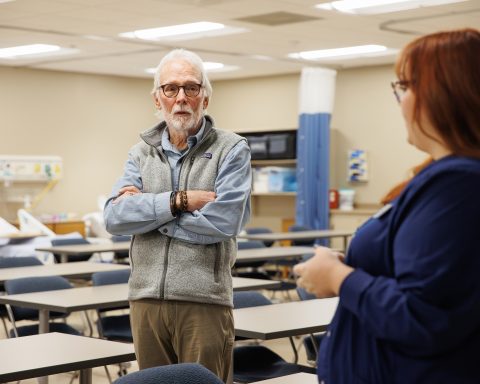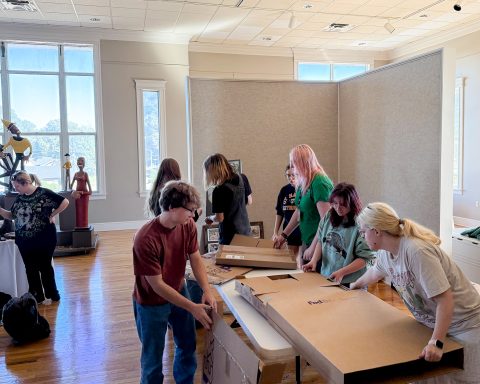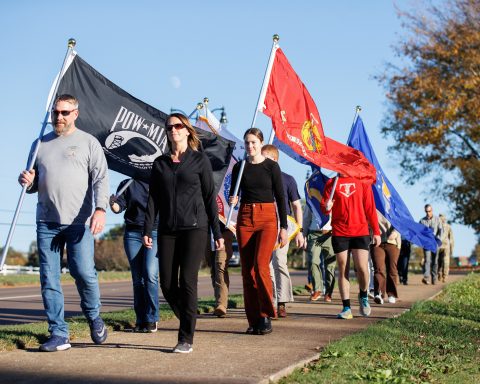Before and during World War II, there were many people who risked their own lives and freedom to save Jews from being exterminated by Nazi Germany during the Holocaust. These people are honored by the Yad Vashem (pronounced “YAHD vah-SHEM”) with the title “Righteous Among the Nations.”
An exhibit about the Righteous Among the Nations honor can be seen in the J. Houston Gordon Museum adjacent to the Corbitt Special Collections Area in the Paul Meek Library at the University of Tennessee at Martin.
The Yad Vashem is the Shoah Martyrs’ and Heroes’ Remembrance Authority of Israel and was established in 1953 by the Knesset, the legislative body of Israel. It is the official memorial in Israel dedicated to the victims of the Holocaust. The honorific title “Righteous Among the Nations” is given to non-Jews who risked their lives to save Jews during the Holocaust.
Sam Richardson, the head of special collections and archives at the Paul Meek Library, said the exhibit commemorates those who helped Jews avoid being killed during World War II.
“These people worked to help the Jews during that time by hiding them, providing them with food and doing other things to help them out,” he said. “This exhibit is about that. It lists 22 people who earned the Righteous Among the Nations title, and it explains what it’s all about.”
Panels in the exhibit provide visitors with the names and the stories of people who risked their own lives in saving Jews during the Holocaust.
As of August 2023, the “Righteous Among the Nations” honor has been bestowed upon 28,217 people, including such notable people as Corrie ten Boom of The Netherlands, author of “The Hiding Place,” and Oskar Schindler of Germany of “Schindler’s List” fame.
Only five Americans have received the honor, including Tennessean Roddie Edmonds of Knoxville.
Edmonds enlisted in the Army in 1941 at the age of 22 and arrived in the European Theater of Operations in December 1944, just five days before the battle of the Bulge began.
During that battle, Edmonds was captured and sent to Stalag IX-B, a German prisoner of war camp. He was later sent to Stalag IX-A near Ziegenhain, Germany.
Edmonds had the rank of master sergeant and was the senior commissioned officer at the camp, made responsible for the camp’s 1,275 American prisoners of war (POWs).
On their first day in Stalag IX-A – Jan. 27, 1945 – as Germany’s defeat was clearly approaching, the camp’s commandant ordered Edmonds to have only the Jewish-American soldiers present themselves at the next morning’s assembly so they could be separated from the other prisoners.
Edmonds ordered all 1,275 soldiers to assemble outside the barracks.
The commandant rushed up to Edmonds in a fury, placed his pistol against Edmonds’ head and demanded that he identify the Jewish soldiers.
Edmonds responded, “We are all Jews here,” and told the commandant that if he wanted to shoot the Jews, he would have to shoot all of the prisoners. He warned the commandant that if he harmed any of his men, he would be prosecuted for war crimes after the war, since the Geneva Convention required prisoners to only give their name, rank and serial number; religion was not required. The commandant backed down.
Edmonds is credited with saving up to 300 Jewish-American soldiers from possible death. He returned home after 100 days of captivity, but kept the event in the POW camp to himself. His son found out after Edmonds died in 1985, and Edmonds was recognized by the Yad Vashem as Righteous Among the Nations on Feb. 10, 2015.
Inspiring stories like those of Edmonds and others can be found in the exhibit. Ready2print exhibits, which made this exhibit possible, is a production of the Museums Division of Yad Vashem in Jerusalem, Israel. The Paul Meek Library is open from 7:30 a.m. to midnight Monday through Friday, from noon to 5 p.m. on Saturday and from 2 p.m. to midnight on Sunday. For more information, call the library at 731-881-7094.
Photo: Information about those who were honored by being named “Righteous Among the Nations” is reflected off of a table in the exhibit at the J. Houston Gordon Museum on the campus of UT Martin.

